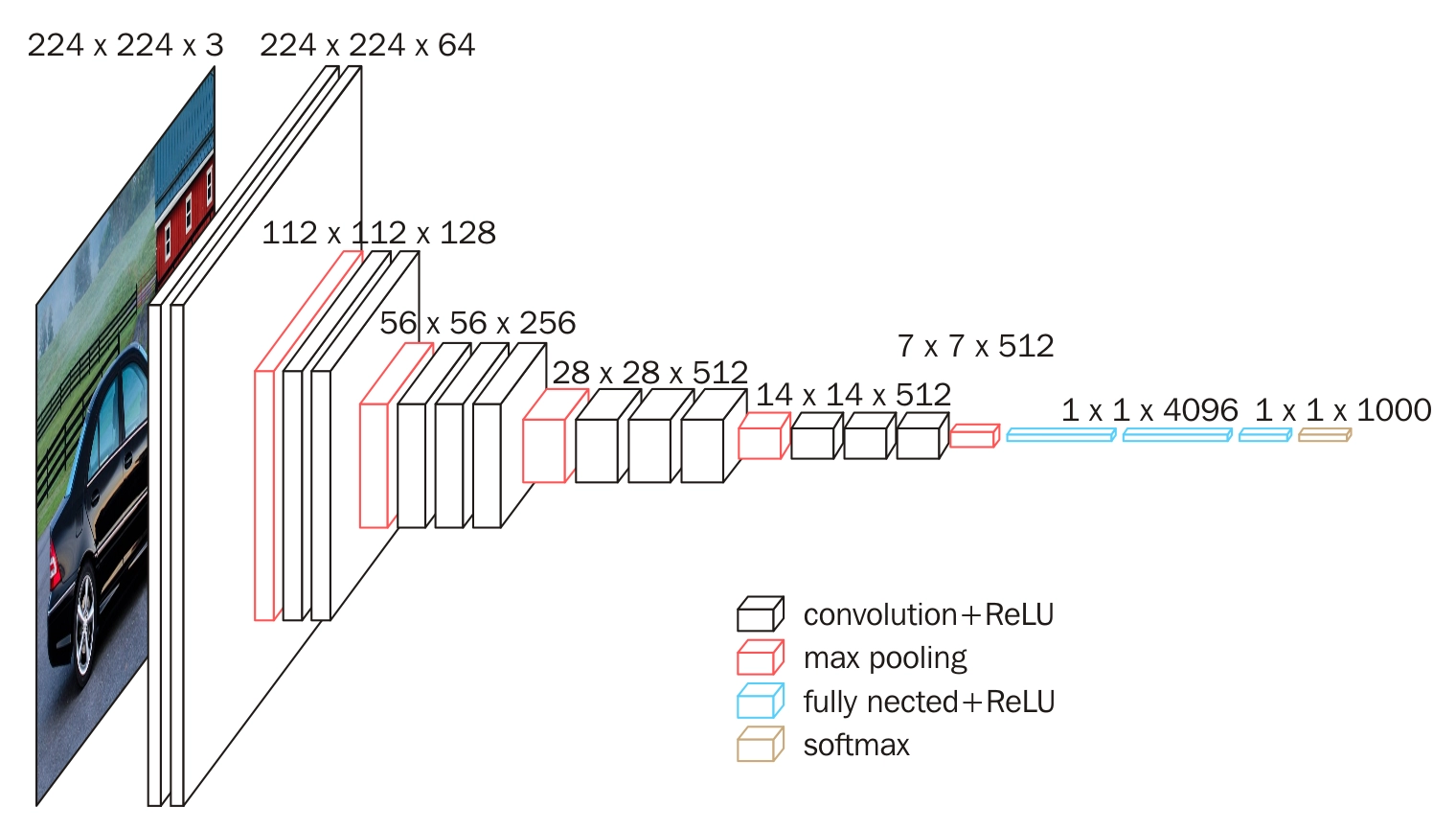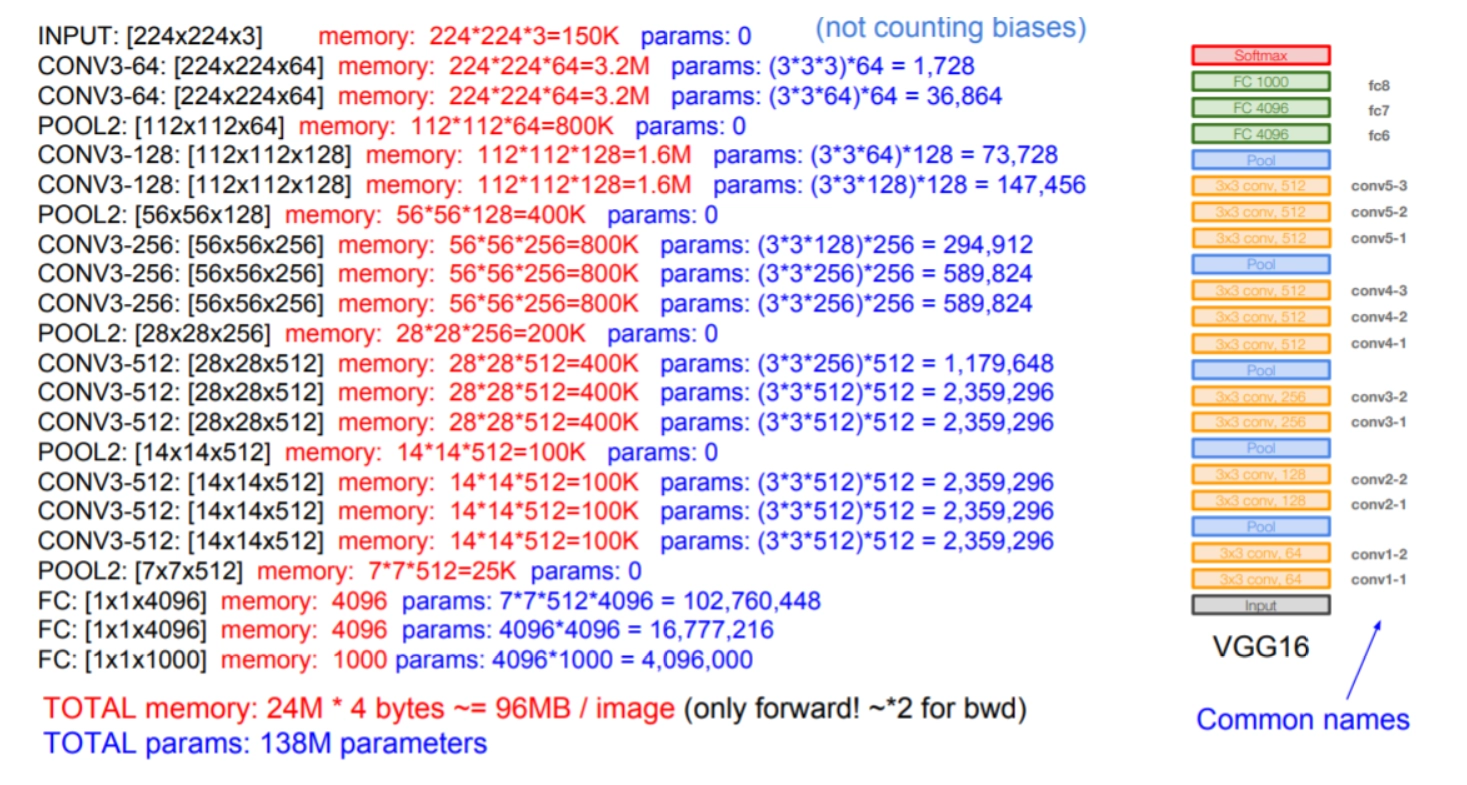1
2
3
4
5
6
7
8
9
10
11
12
13
14
15
16
17
18
19
20
21
22
23
24
25
26
27
28
29
30
31
32
33
34
35
36
37
38
39
40
41
42
43
44
45
46
47
48
49
50
51
52
53
54
55
56
57
58
59
60
61
62
63
64
65
66
67
| class Net(nn.Module):
def __init__(self):
super(Net, self).__init__()
self.pool = nn.MaxPool2d(2, 2)
self.batchNorm1 = nn.BatchNorm2d(64)
self.batchNorm2 = nn.BatchNorm2d(128)
self.batchNorm3 = nn.BatchNorm2d(256)
self.batchNorm4 = nn.BatchNorm2d(512)
self.batchNorm5 = nn.BatchNorm2d(512)
self.conv1_1 = nn.Conv2d(3, 64, 3, padding=1, bias=False)
self.conv1_2 = nn.Conv2d(64, 64, 3, padding=1, bias=False)
self.conv2_1 = nn.Conv2d(64, 128, 3, padding=1, bias=False)
self.conv2_2 = nn.Conv2d(128, 128, 3, padding=1, bias=False)
self.conv3_1 = nn.Conv2d(128, 256, 3, padding=1, bias=False)
self.conv3_2 = nn.Conv2d(256, 256, 3, padding=1, bias=False)
self.conv3_3 = nn.Conv2d(256, 256, 3, padding=1, bias=False)
self.conv4_1 = nn.Conv2d(256, 512, 3, padding=1, bias=False)
self.conv4_2 = nn.Conv2d(512, 512, 3, padding=1, bias=False)
self.conv4_3 = nn.Conv2d(512, 512, 3, padding=1, bias=False)
self.conv5_1 = nn.Conv2d(512, 512, 3, padding=1, bias=False)
self.conv5_2 = nn.Conv2d(512, 512, 3, padding=1, bias=False)
self.conv5_3 = nn.Conv2d(512, 512, 3, padding=1, bias=False)
self.fc1 = nn.Linear(512 * 7 * 7, 4096)
self.fc2 = nn.Linear(4096, 4096)
self.fc3 = nn.Linear(4096, 10)
self.drop = nn.Dropout(p=0.5)
def forward(self, x):
x = F.relu(self.batchNorm1(self.conv1_1(x)))
x = F.relu(self.batchNorm1(self.conv1_2(x)))
x = self.pool(x)
x = F.relu(self.batchNorm2(self.conv2_1(x)))
x = F.relu(self.batchNorm2(self.conv2_2(x)))
x = self.pool(x)
x = F.relu(self.batchNorm3(self.conv3_1(x)))
x = F.relu(self.batchNorm3(self.conv3_2(x)))
x = F.relu(self.batchNorm3(self.conv3_3(x)))
x = self.pool(x)
x = F.relu(self.batchNorm4(self.conv4_1(x)))
x = F.relu(self.batchNorm4(self.conv4_2(x)))
x = F.relu(self.batchNorm4(self.conv4_3(x)))
x = self.pool(x)
x = F.relu(self.batchNorm5(self.conv5_1(x)))
x = F.relu(self.batchNorm5(self.conv5_2(x)))
x = F.relu(self.batchNorm5(self.conv5_3(x)))
x = self.pool(x)
x = x.view(-1, 512 * 7 * 7)
x = F.relu(self.fc1(x))
x = F.relu(self.fc2(x))
x = self.fc3(x)
return x
net = Net()
|



